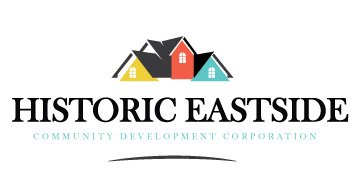Our Story
In 2013 a group of residents, small business owners, and stakeholders came together to form the Eastside Community Coalition. The goal was to act as a liaison between residents and civic organizations to identify resources to help support the community as private investment in the neighborhood began to increase. In 2016, ECC (Eastside Community Coalition) became Historic Eastside Community Development Corporation (HECDC) with a mission to preserve and protect the rich history, heritage and culture of Eastside. In 2020 HECDC became a Community Housing Development Organization (CHDO).
The Eastside evolved as a series of neighborhoods as a result of expansion of residential growth of Jacksonville in the 1800’s. The neighborhoods of Eastside consisted of East Jacksonville, Fairfield, Oakland, Campbells’ Addition, and Phoenix. The community continued to expand to the northeast eventually forming a separate neighborhood and town known as Fairfield clustered along both sides of Talleyrand Avenue south of Jessie Street.
Dating to the period immediately following the Civil War, Oakland became the area settled by freed-men and included the area defined by East Union, Oakley, and Grant Streets on the south, Ionia Street and the railroad track on the west, Haines Street on the east, and East First Street on the north. In the 1880’s, residential growth in Oakland continued into a new community known as Campbell’s Addition, which was bounded by East First Street on the south, Palmetto Street and the railroad track on the west, Haines Street on the east, and East Seventh Street on the north.
Widely considered to be one of Jacksonville’s most important historically Black neighborhoods, the Eastside was home to noteworthy sites, including the Boylan Haven School for Girls, which served girls from prominent African-American families, Brewster Hospital, the first hospital for African-Americans in the city, and Mother Midway A.M.E. Church which, organized in 1865, is the oldest A.M.E. congregation in Florida.
Several prominent African-Americans also called Eastside home, including Eartha Mary Magdalene White, a humanitarian best known for starting a tuberculosis center and serving as a member of President Woodrow Wilson’s White House Conference; James Weldon Johnson, the first African-American admitted to the Florida Bar and author of “Lift Ev’ry Voice and Sing,” now known as the Black National Anthem; A. Phillip Randolph, union leader and father of the Civil Rights Movement; Bob Hayes, running back for the Dallas Cowboys and Olympic gold medalist known as the “Fastest Man in the World;” and the 1958 Matthew Gilbert High School football team, the first all-black Florida state champions.

